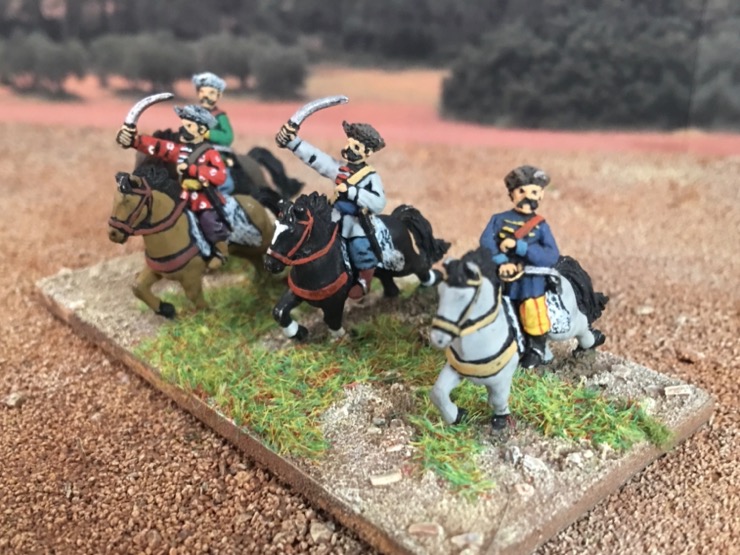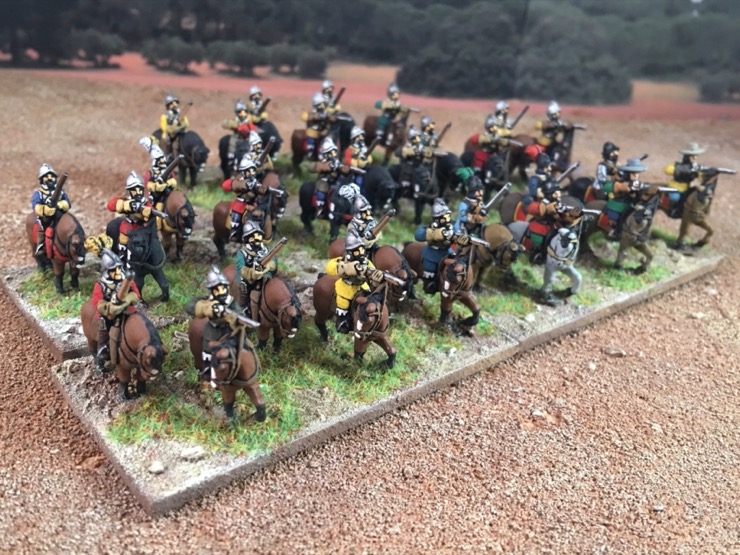Recently we play tested my S12 Fighting Across the River scenario for Tilly’s Very Bad Day (which I’ll post about soon). After the game Adam and I got to talking about the premise of the scenario and Adam encouraged me to take a closer look at some 17th century battles that feature a river crossing. In this post I look at four such battles and look for patterns in four factors: (1) crossing points; (2) forces present; (3) forces engaged; and (4) the battle result. The nature of the river crossings includes whether the river was fordable and how many crossings there were. A lot of men might have been nearby but only a minority were actively engaged, which suggests whether these battles were ‘nasty fights’ or ‘grand battles’. The result of battle is on the list because the defenders of a river crossings had a habit of ‘retreating once things get serious’.
Northern Wars
I’m using the “Northern Wars” for the various wars involving any of Sweden, Russia and/or the Polish-Lithuanian Commonwealth during the 17th Century. That includes, but isn’t limited to, Polish–Swedish War (1600–1629), the Khmelnytsky Uprising (1648–1657), the Russo-Polish / Thirteen Years’ War (1654–1667), the Second Northern War / Swedish Deluge (1655–1660) and the Scanian War / Swedish-Brandenburgian War (1674–1679).
Crimean Khanate (Crimean Tatar) Army List for Tilly’s Very Bad Day
This is the Crimean Khanate (Crimean Tatar) Army List for Tilly’s Very Bad Day.
Zaporozhian Cossack Army List for Tilly’s Very Bad Day
This is the Zaporozhian Cossack Army List for Tilly’s Very Bad Day.
Small Kircholm – A Tillys Very Bad Day Battle Report 2
Following our first play test I thought I’d make some tweaks to my Small Kircholm scenario and try it again. In this play test the Hussars are just Superior Horse and there are five Hussar units, not six. Chris bravely took the Swedes for a second time, hoping to benefit from his experience in the first game. Adam took the Polish-Lithuanian Commonwealth. In Tilly’s Very Bad Day terms this is a small game on a small table with small armies.
Summary: A really good game. A better game balance than the first version. Both players played well with particular credit to Chris for quickly compensating for the crippling Swedish deployment. But the Poles took the day, again.
Small Kircholm – A Tillys Very Bad Day Battle Report 1
I’m still keen on playing with my brand new Polish-Lithuanian Army so when Chris came over I suggested we play Small Kircholm. The scenario was very draft and I expected to find that it favoured the Poles too much. In particular the experimental Hussar rules were probably a touch too punchy. In Tilly’s Very Bad Day terms this is a small game on a small table with small armies.
Summary: Poles rolled over the Swedes in three game turns. Scenario needs tweaking. The experimental Lancers were a super troop type – and we don’t need that kind of thing.
Swedish versus Polish – A Tilly’s Very Bad Day Battle Report
The easing of Covid-19 restrictions allowed me to get my brand new Polish-Lithuanian Army on table. Chris, Jamie, and Adam came over and we played Swedish versus Polish using Tilly’s Very Bad Day. This was a pick up game with pre-generated army lists and terrain chosen via Terrain Cards. It was also the first time we played an Eastern Army.
Summary: A really enjoyable game. It see sawed but eventually the Swedes won the infantry battle and the Polish-Lithuanian Commonwealth won the cavalry battle. Pretty standard outcome for these historical opponents. In this case the Swedes caused enough damage to take the overall victory. But it was a very near run thing.
Small Kircholm – A Tilly’s Very Bad Day Scenario
I have been Musing on Polish Winged Hussars in Tilly’s Very Bad Day and I needed a scenario to play test on. So here is the Battle of Kircholm (27 Sep 1605), in the Polish–Swedish War (1600–1611), using Tilly’s Very Bad Day. The Swedes had over 10,000 men and the Polish-Lithuanian Commonwealth about 4,000, but it was a massive Polish-Lithuanian victory with the Swedes losing up to 9,000 killed to only 100 Polish-Lithuanians. This is one of many victories by the Polish Winged Hussars – and I introduce terribly draft rules to cover them. These defeats were pivotal in persuading Gustavus Adolphus that he had to reform the Swedish army. Given the number of troops involved in the real battle, this is a small game on a small table with small armies (in numbers of units).
Musing on Polish Winged Hussars in Tilly’s Very Bad Day
After a bit of Spitballing on Eastern Armies in Tilly’s Very Bad Day I decided that the rules as they stand do not simulate Polish Winged Hussars adequately. So here is my current thinking.
Army of the Polish-Lithuanian Commonwealth in the 17th Century
When I first visited London, in 1989, I attended a wargaming club in North London. I forget where. The club night featured a renaissance game with Polish Hussars dominating the table. I was captivated. Now, years later, I’m revisiting the army of the Polish-Lithuanian Commonwealth (Rzeczpospolita). Poland was the biggest country in 17th Century Europe, nearly twice as big as the next biggest, France. Its army was powerful and combined elements of the east and west. The most distinctive component were the famous winged Hussars, but they also had good light cavalry, and western style pike and shot. And it was fighting the Poles where Gustavus Adolphus cut his teeth as a military commander. This post is about the army of the Polish-Lithuanian Commonwealth.
Polish-Lithuanian Orders of Battle Converted to Tilly’s Very Bad Day
I just bumped into Jasinski’s Examples of the composition of the Polish Army in the 17th Century. Perfect for getting a rough idea of what a Polish-Lithuanian army list might be for Tilly’s Very Bad Day. I converted each of Jasinski’s orders of battle to Tilly’s Very Bad Day using different nominal unit sizes. Then I combined those for a small game so there was a range for each troop type. That gave me a single army list with a range of options.
Spitballing on Eastern Armies in Tilly’s Very Bad Day
I tend to focus on the Thirty Years War in western and central Europe. Tilly’s Very Bad Day is written with this same focus. But there was a lot going on in the East. Russia, Poland and the Ottoman Empire were all big players. Even closer to home there was also the Hungarians and Transylvanians – sandwiched between the Holy Roman Empire and the Ottomans – and they could field large armies in their own right. So how can we / should we represent these armies in Tilly’s Very Bad Day? I don’t know the answer so figured we should do some “spitballing” on the topic.
Making light horse more effective in Tilly’s Very Bad Day
In my week of musing on unit types in Tilly’s Very Bad Day, I thought I’d outline what light horse represent and contrast them to (heavy) horse in the Thirty Years War. I also consider some ways to modify the rules to make light horse more valuable/useful/effective.
Musing on Types of Horse in Tilly’s Very Bad Day
I quite like Brzezinski’s (1993) analysis of cavalry in the Thirty Years War. He believes there were three types of horse (Arquebusier, Horsemen, Cuirassier) and I think unit quality can simulate these types in Tilly’s Very Bad Day. All three types could shoot or charge but typically a unit did one or the other; I leave this choice to the player.













